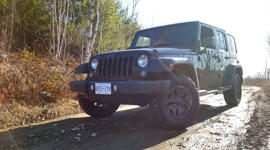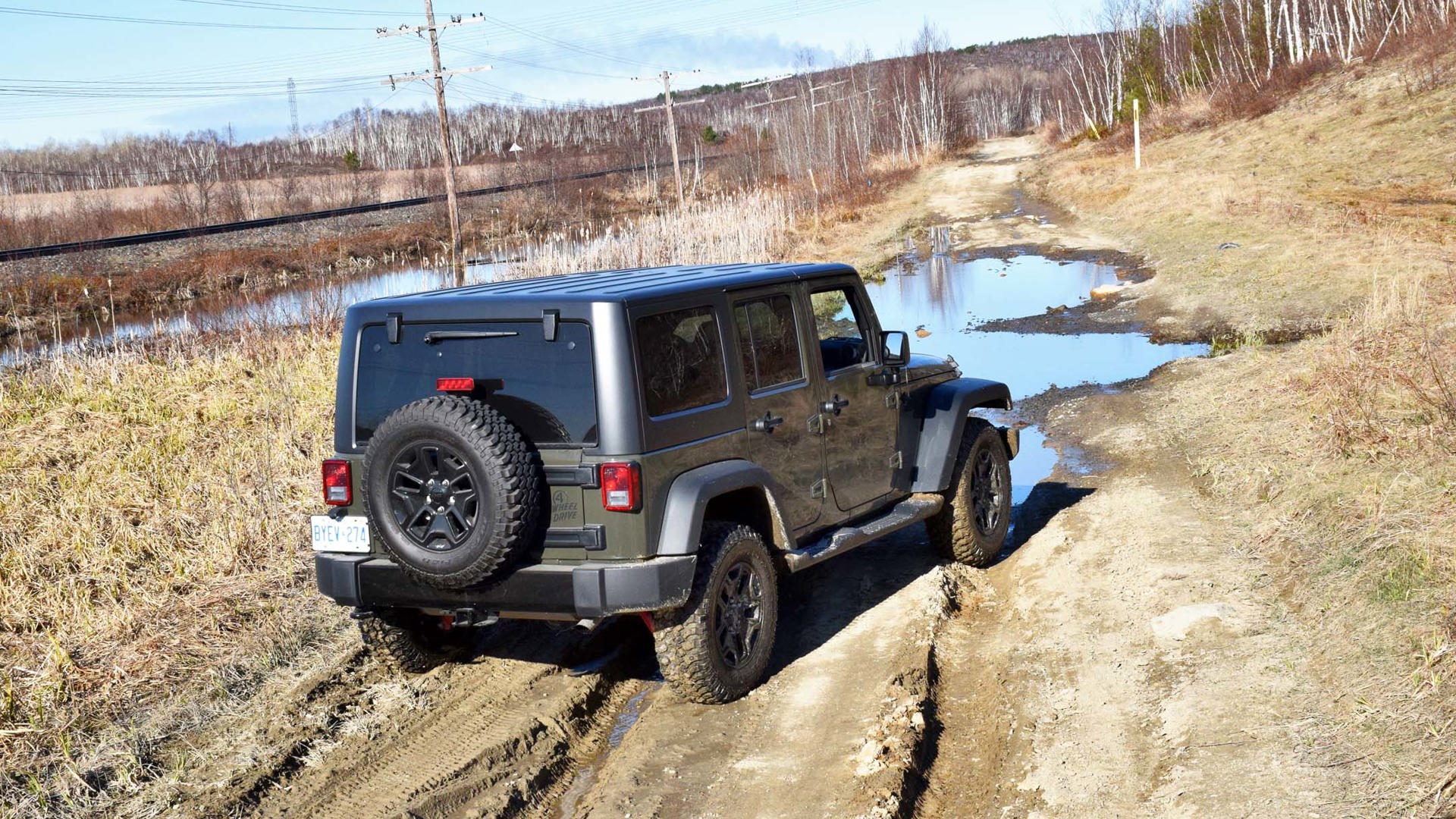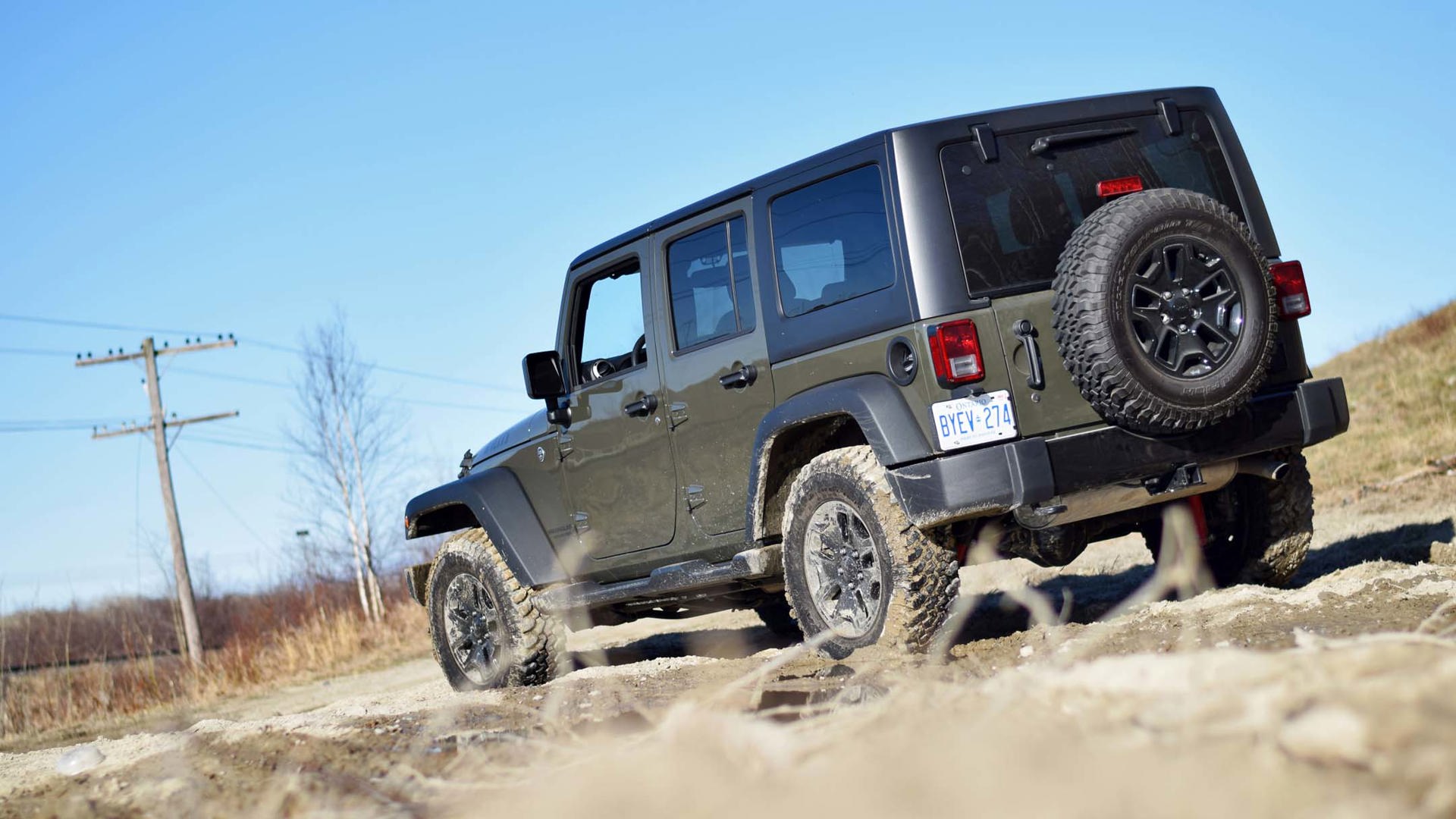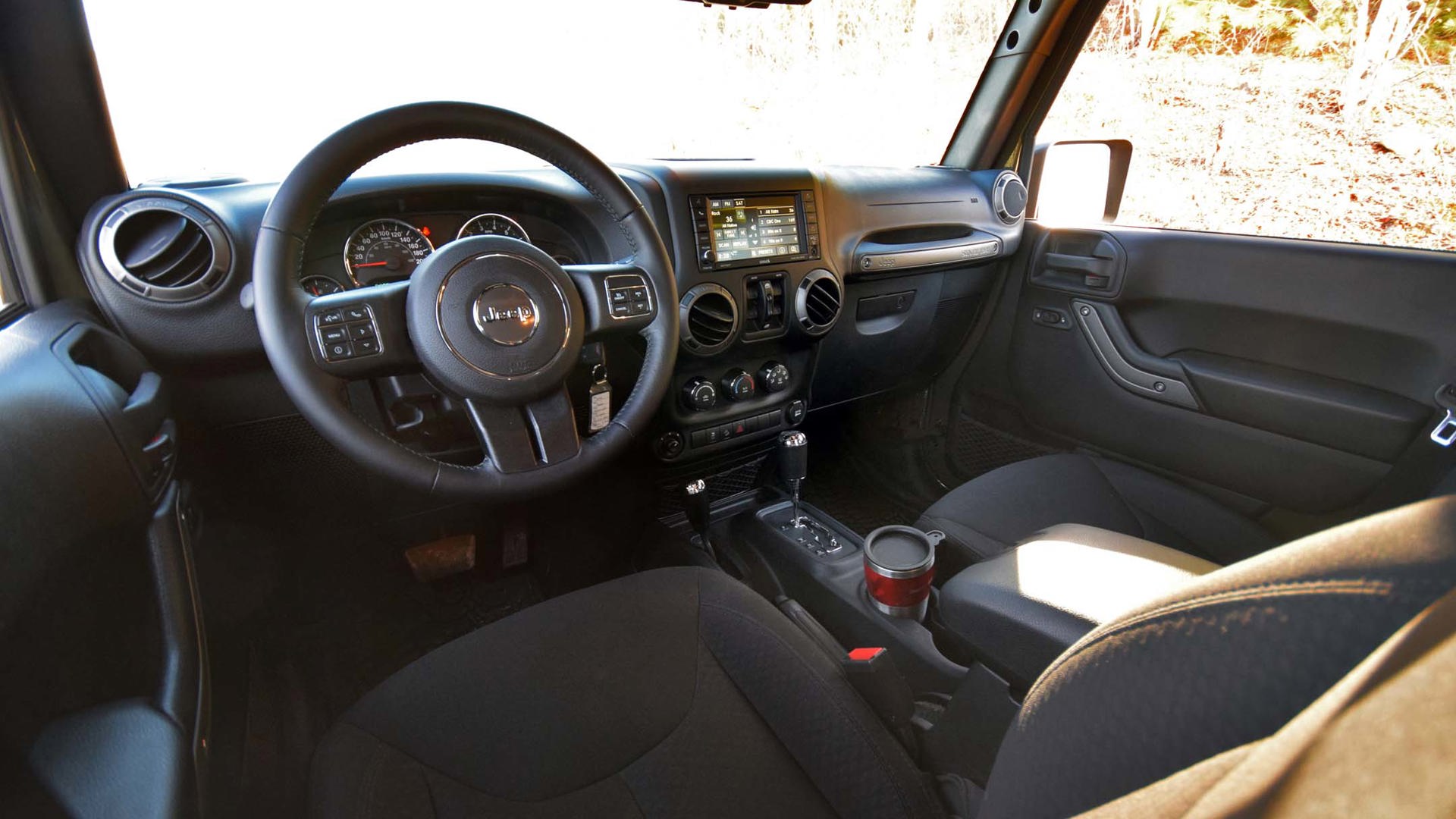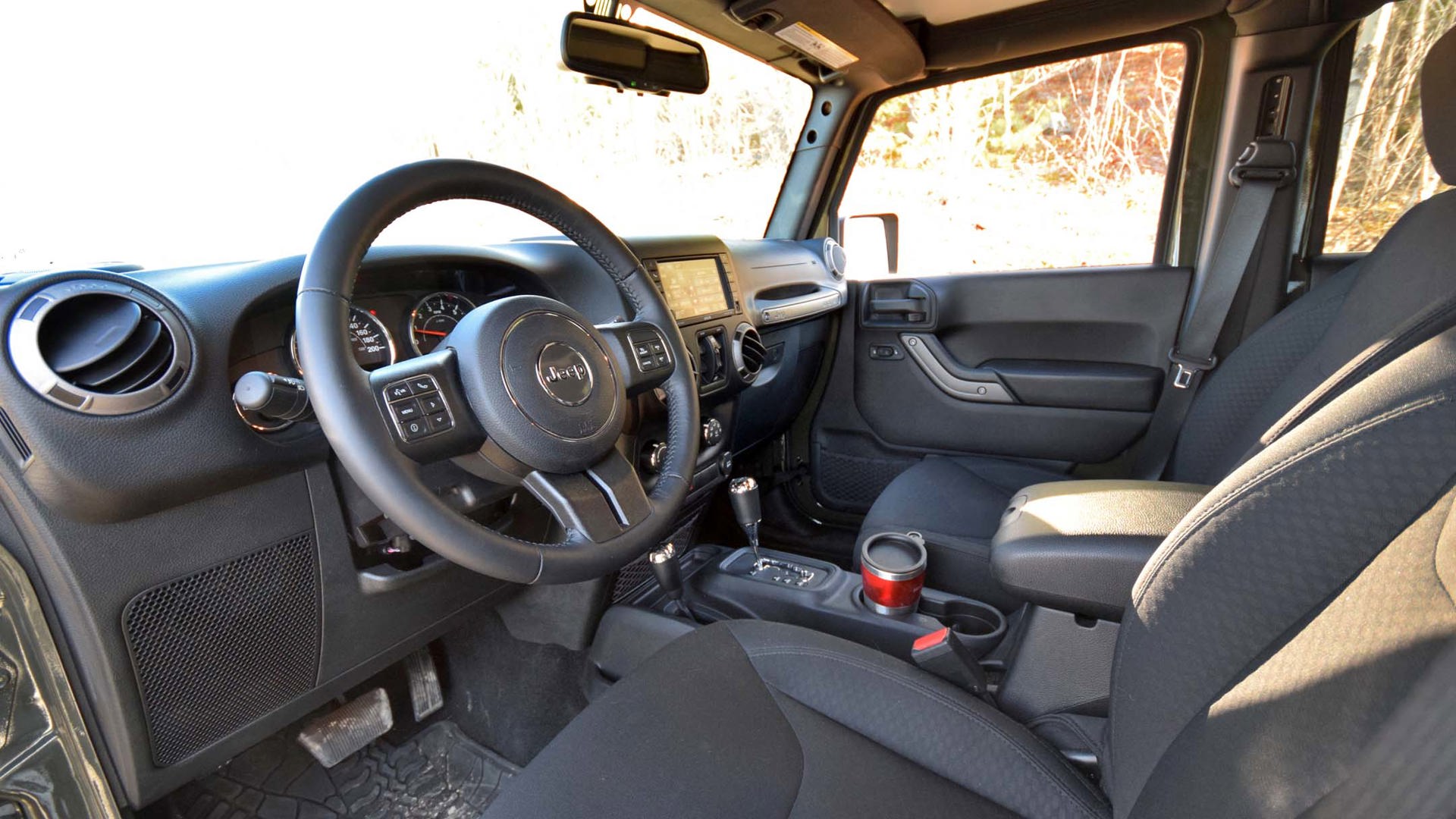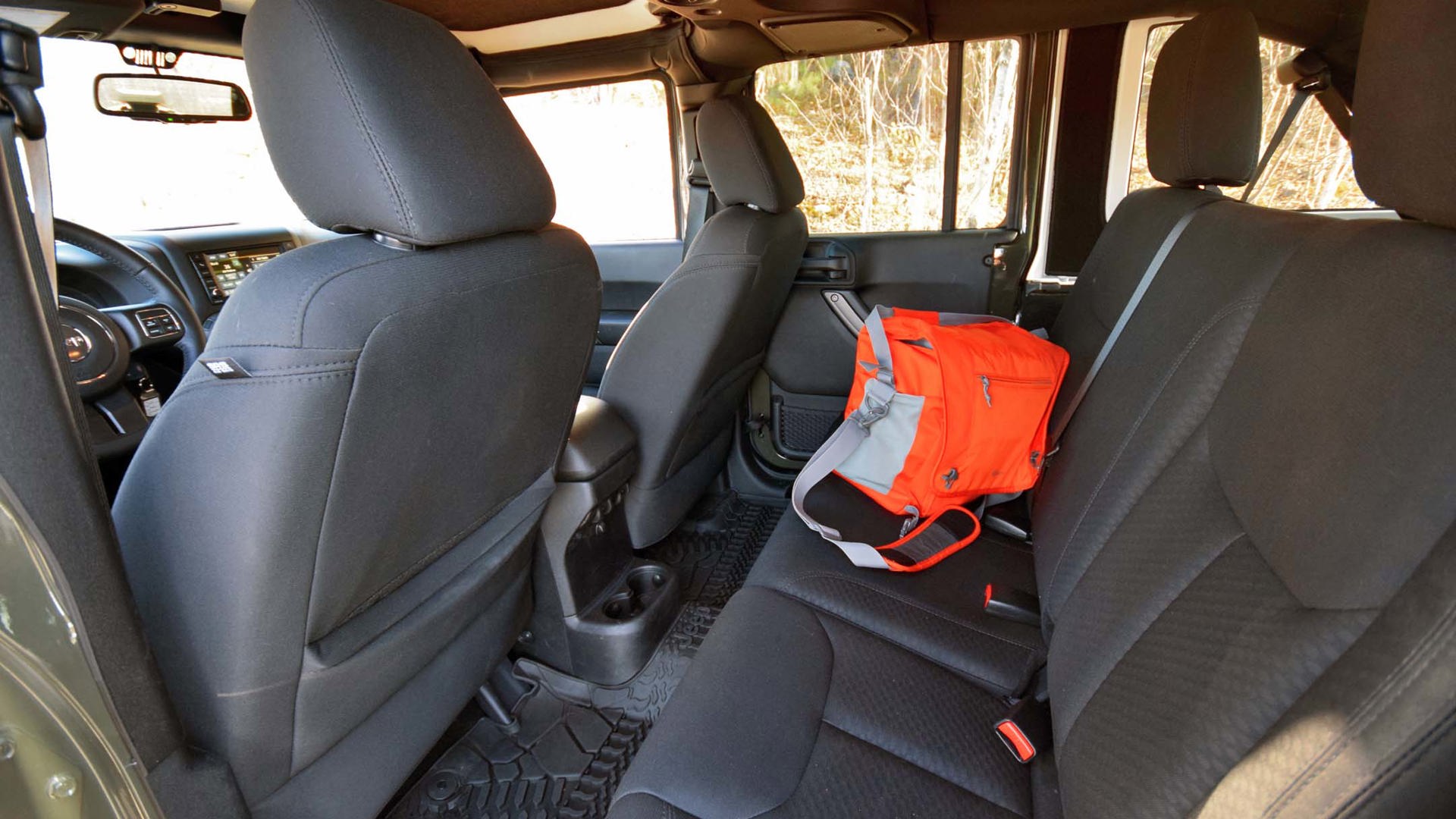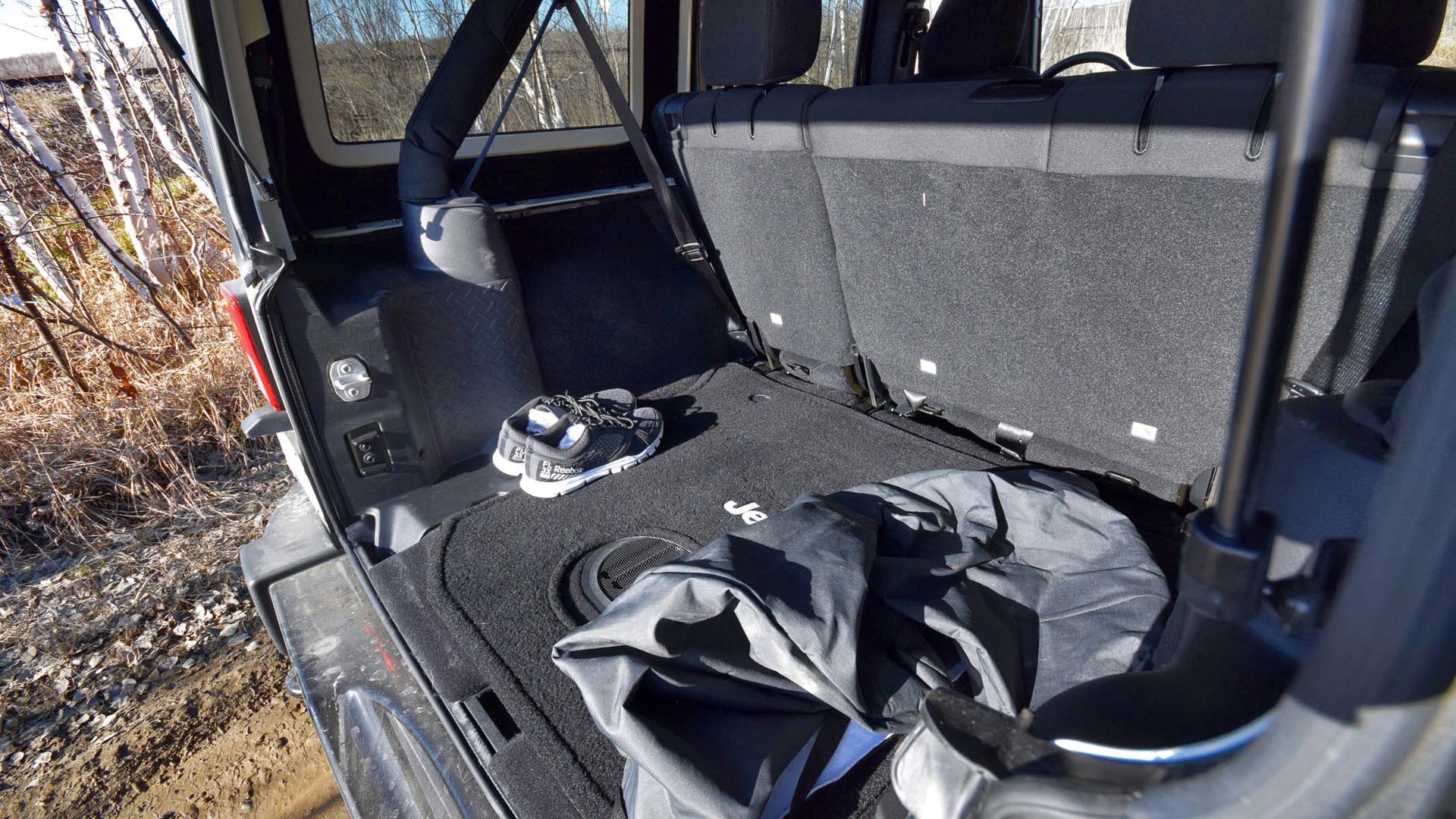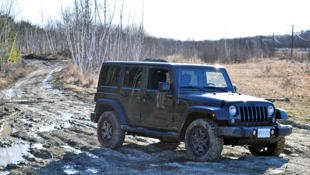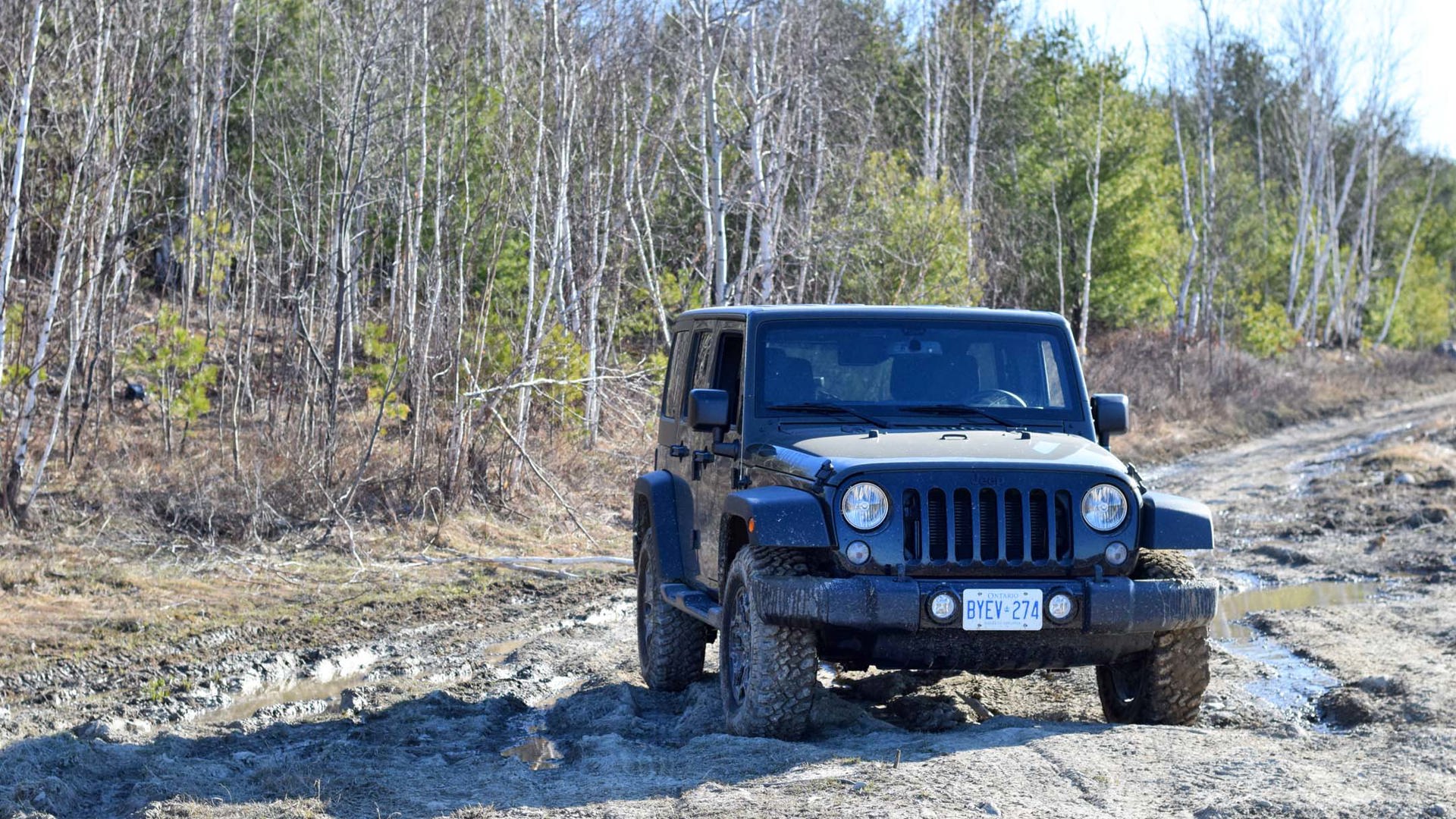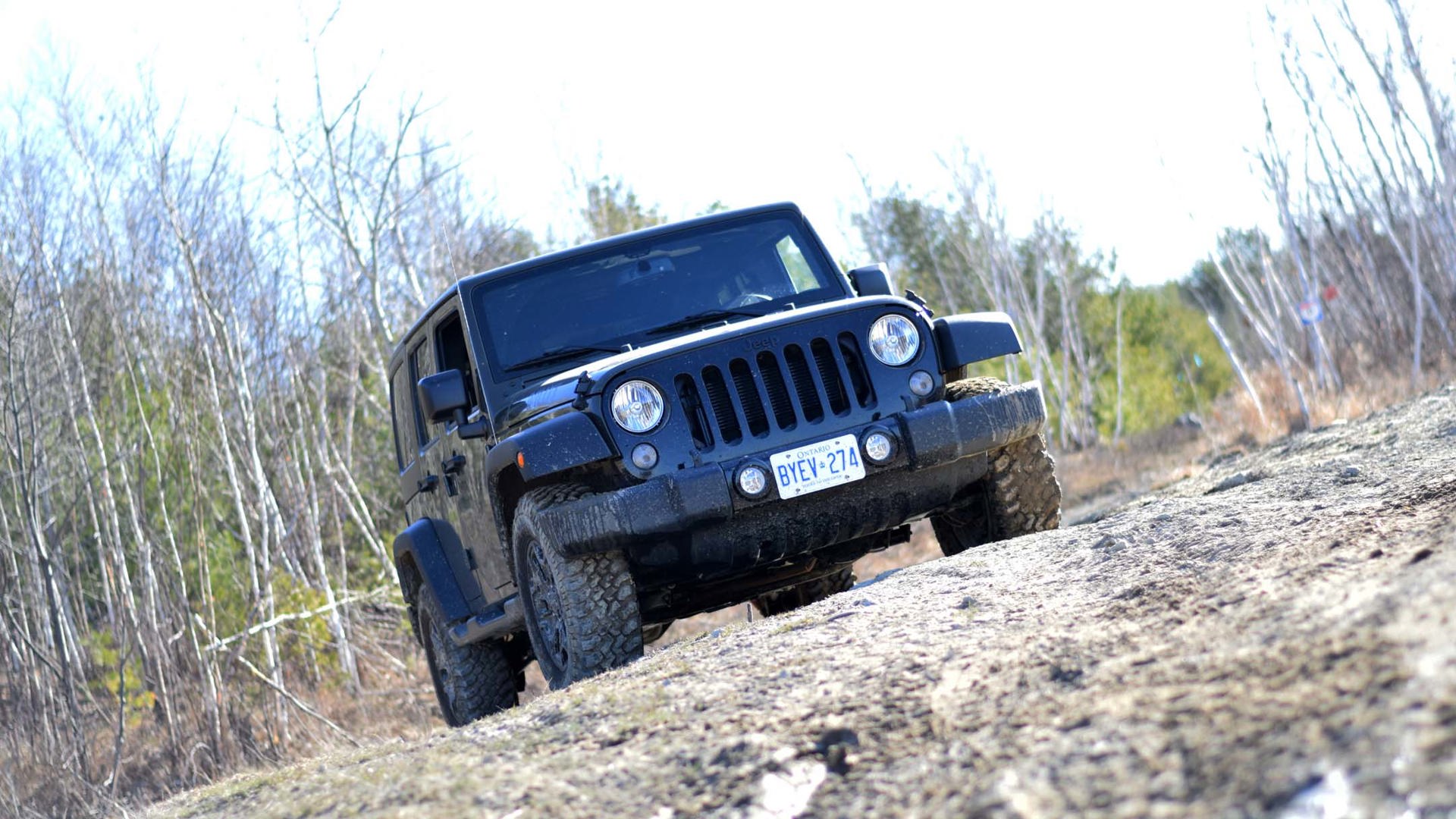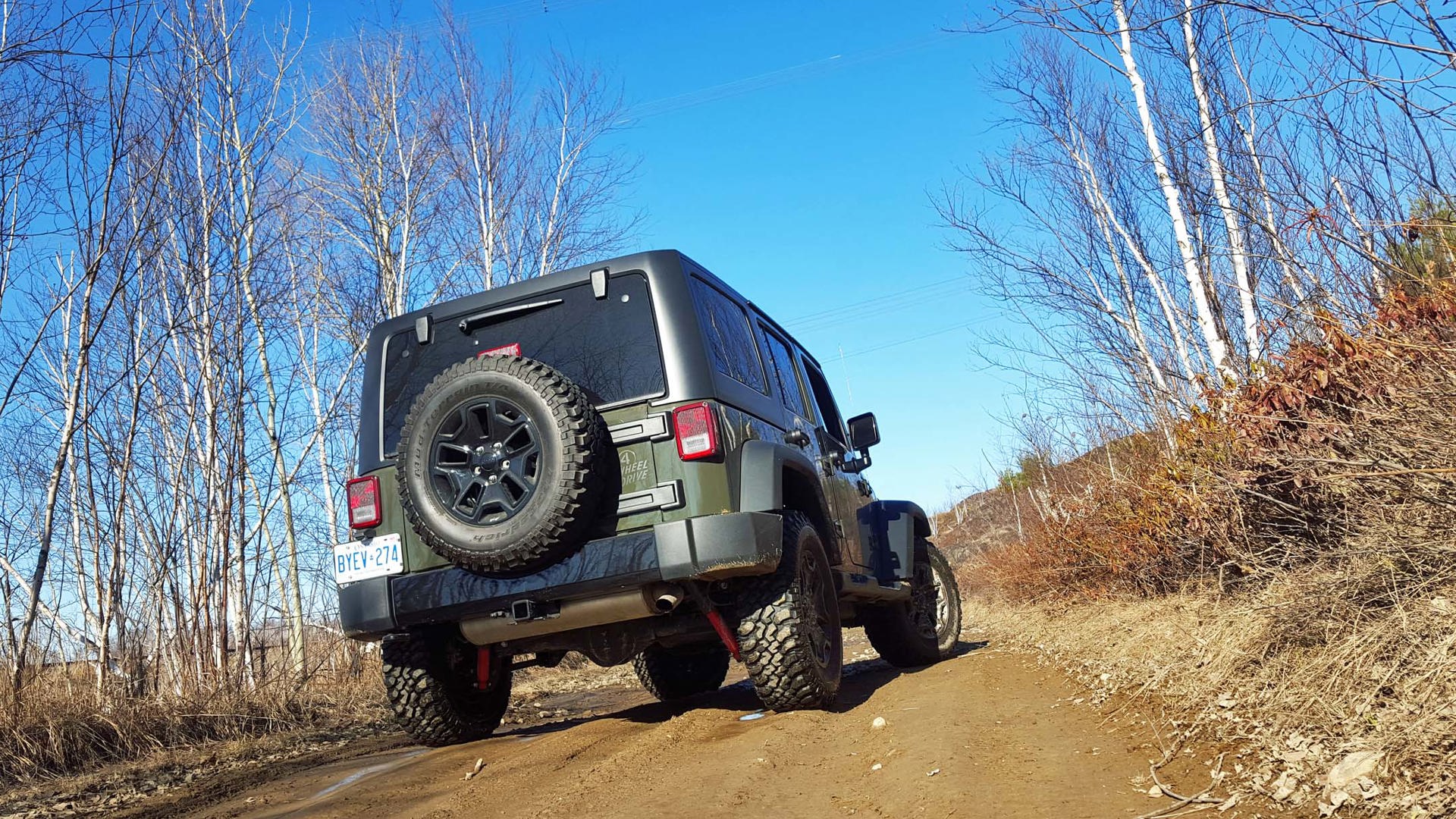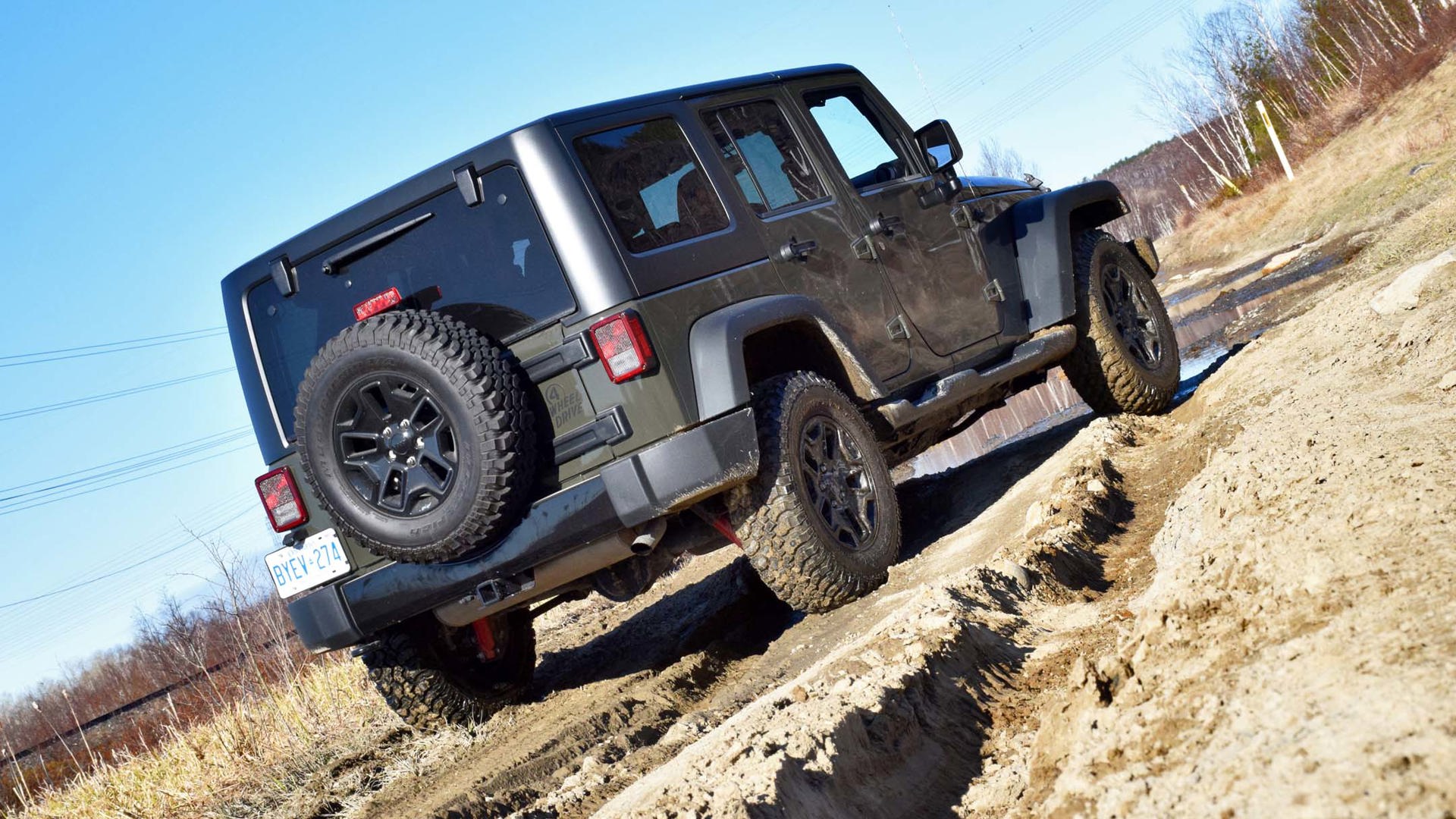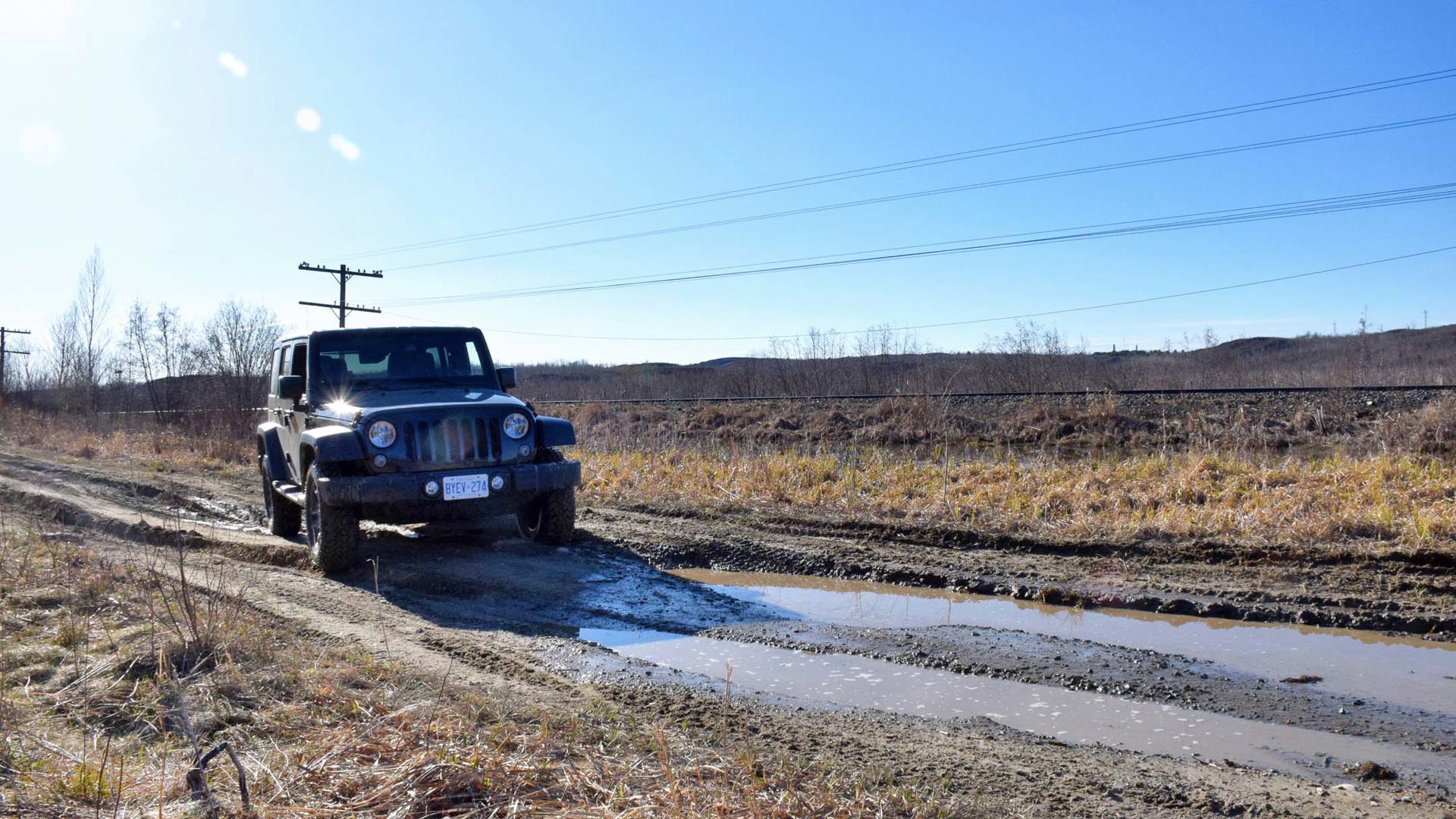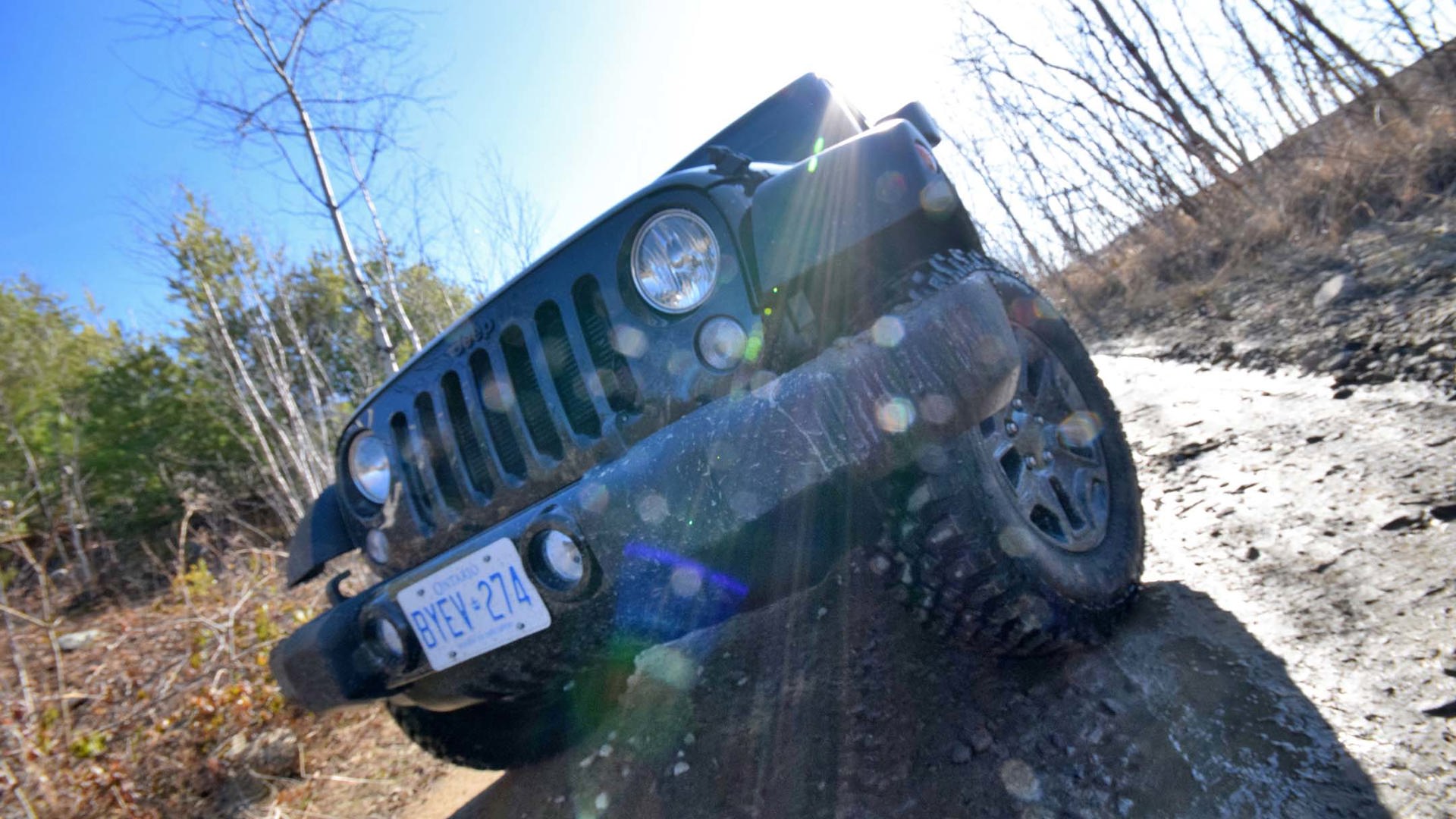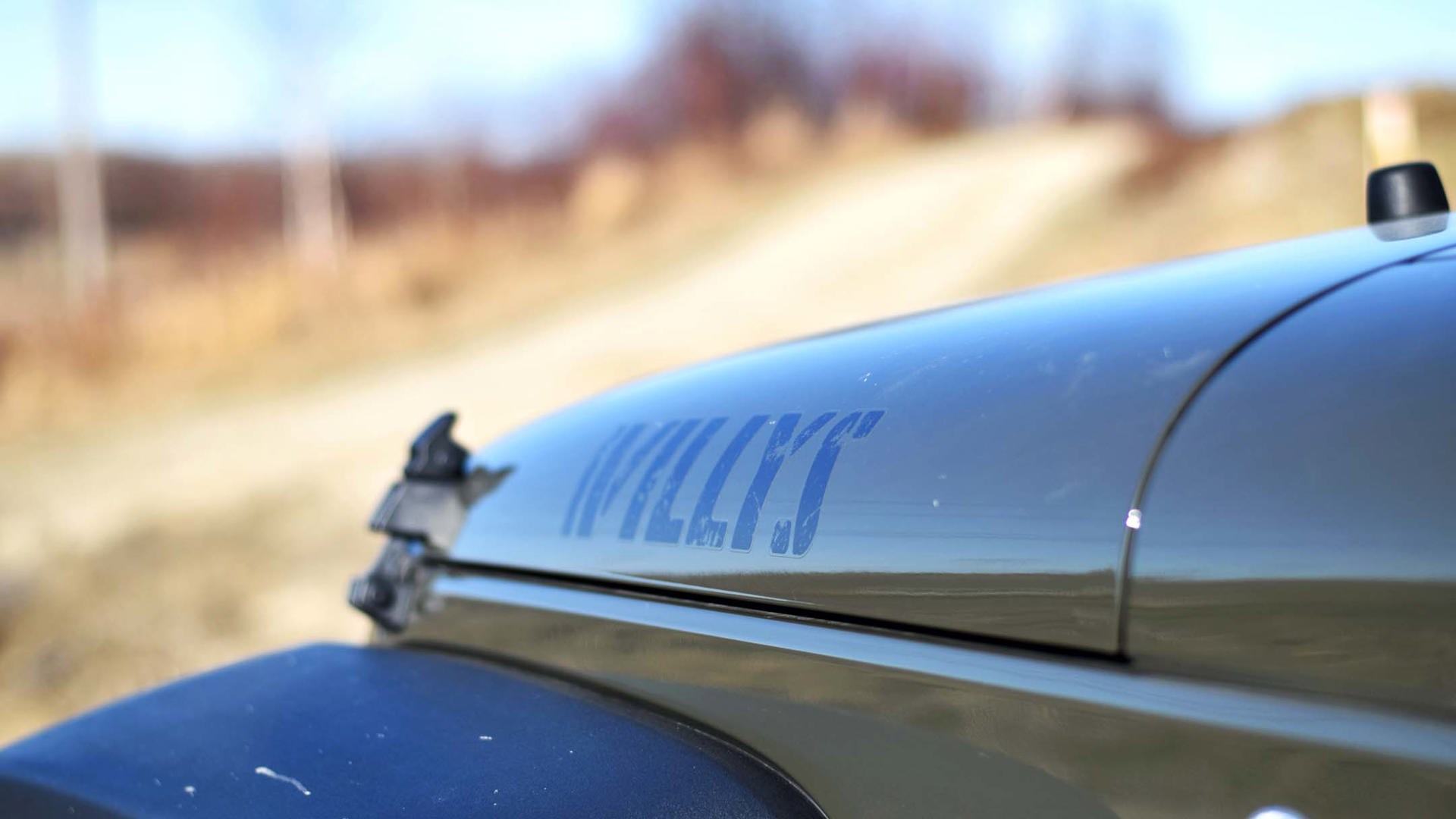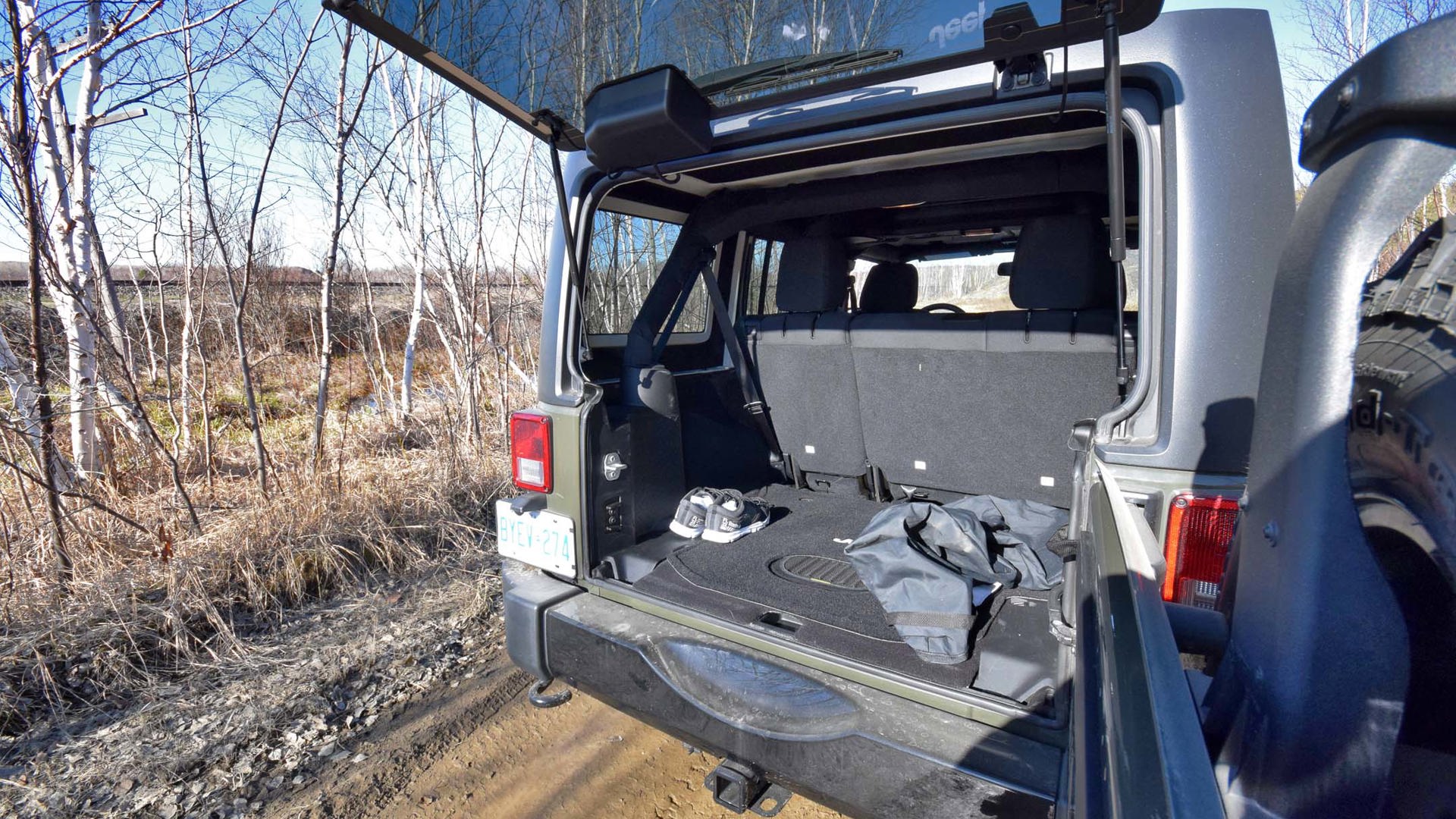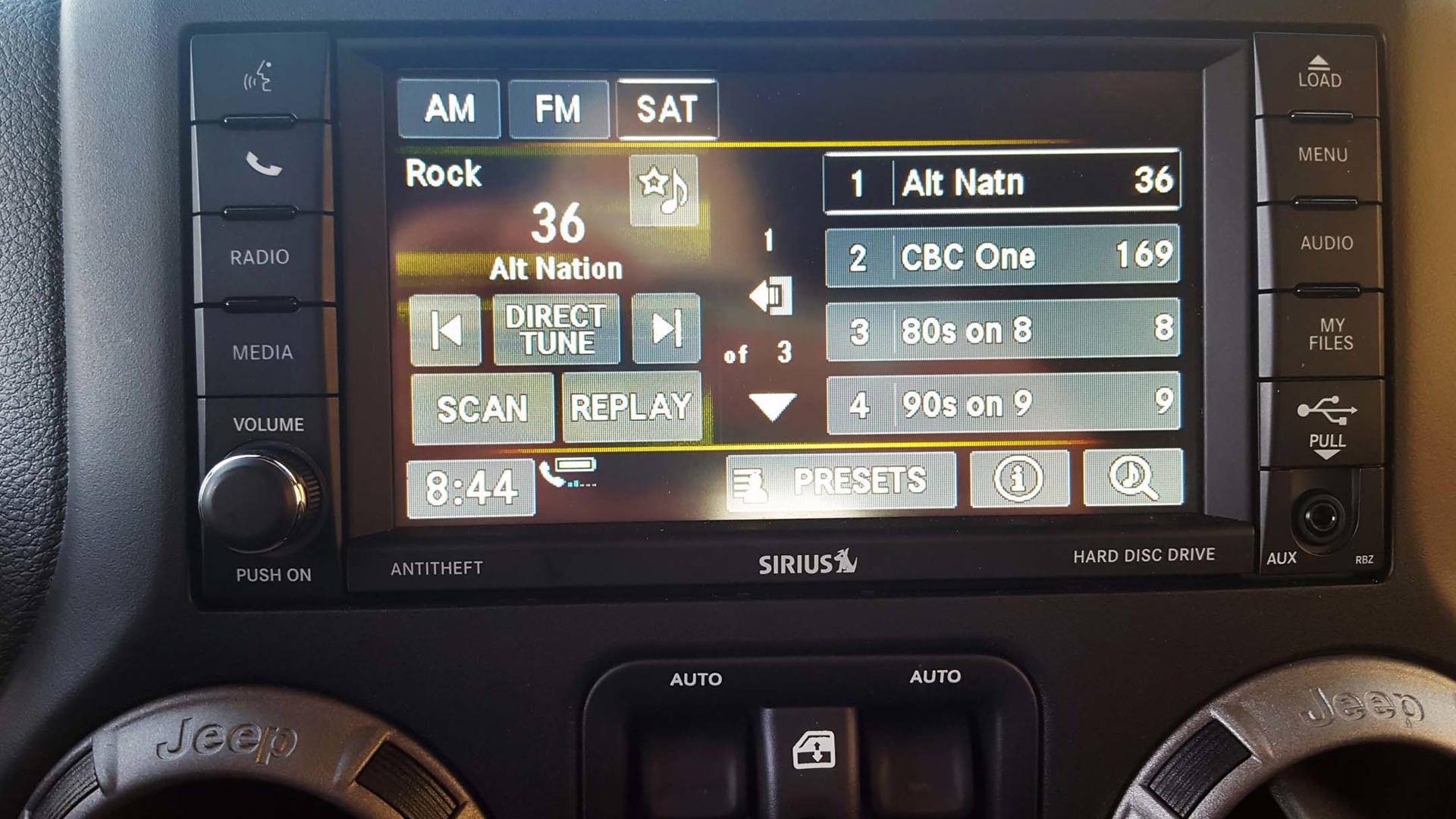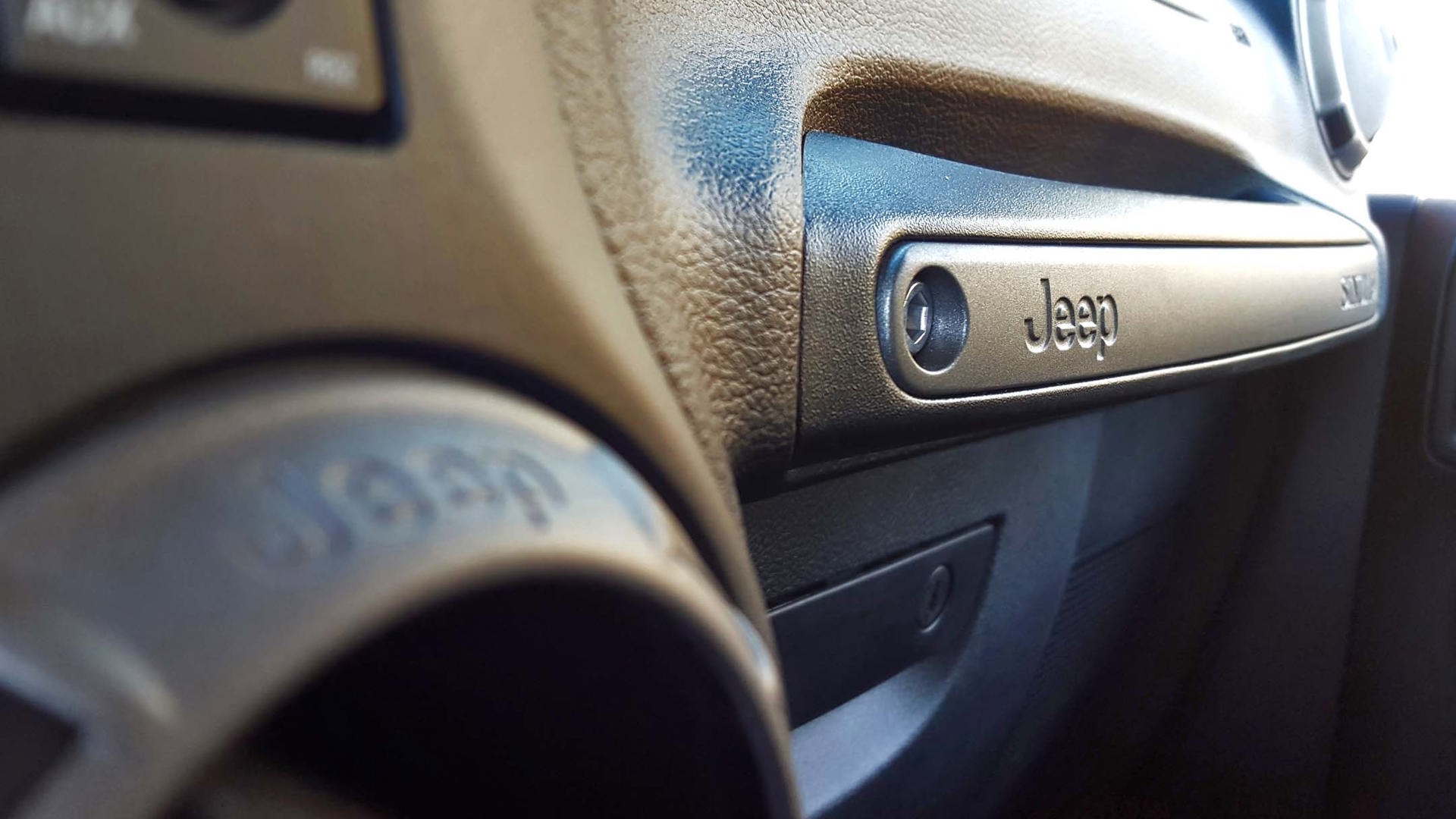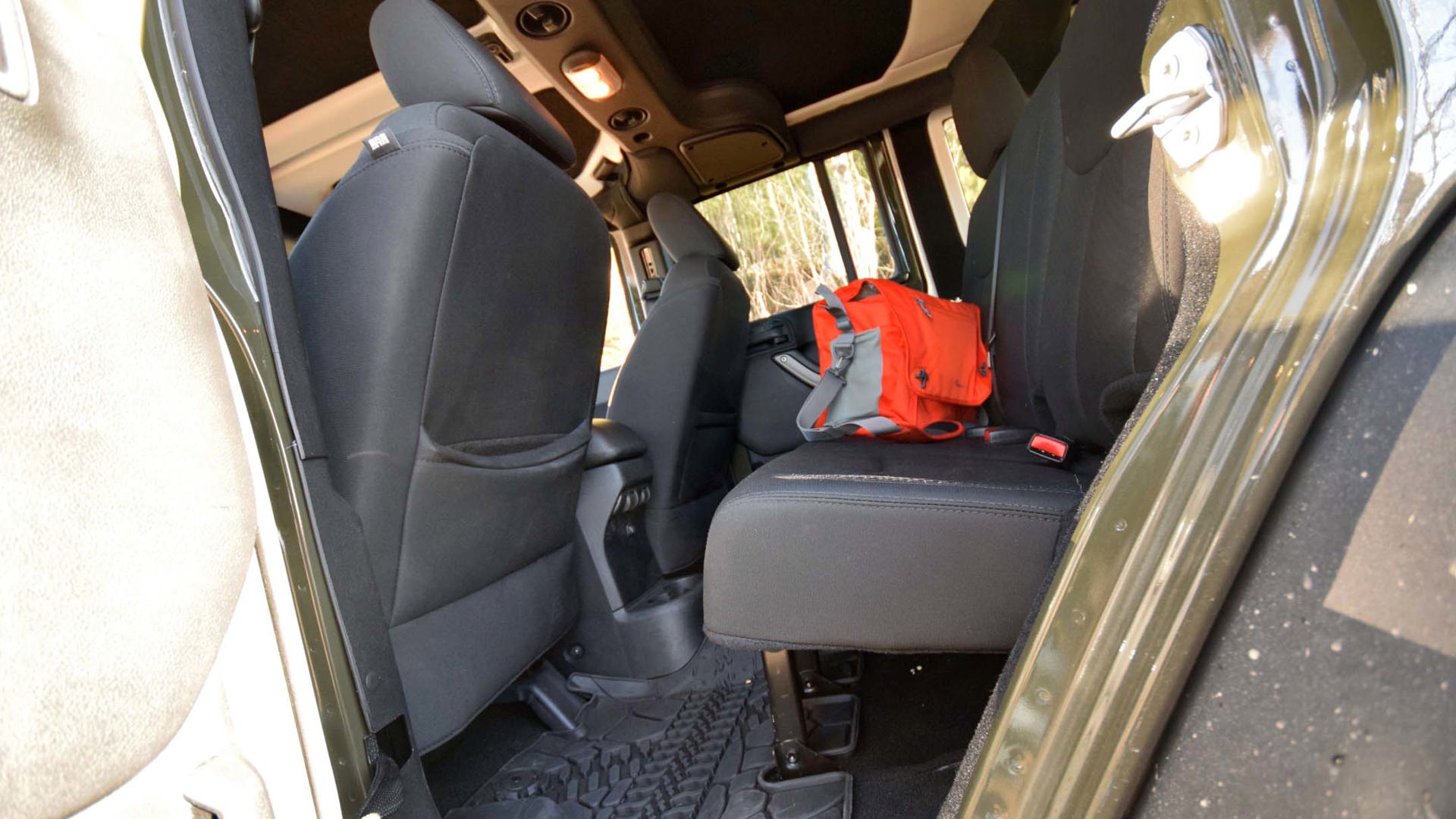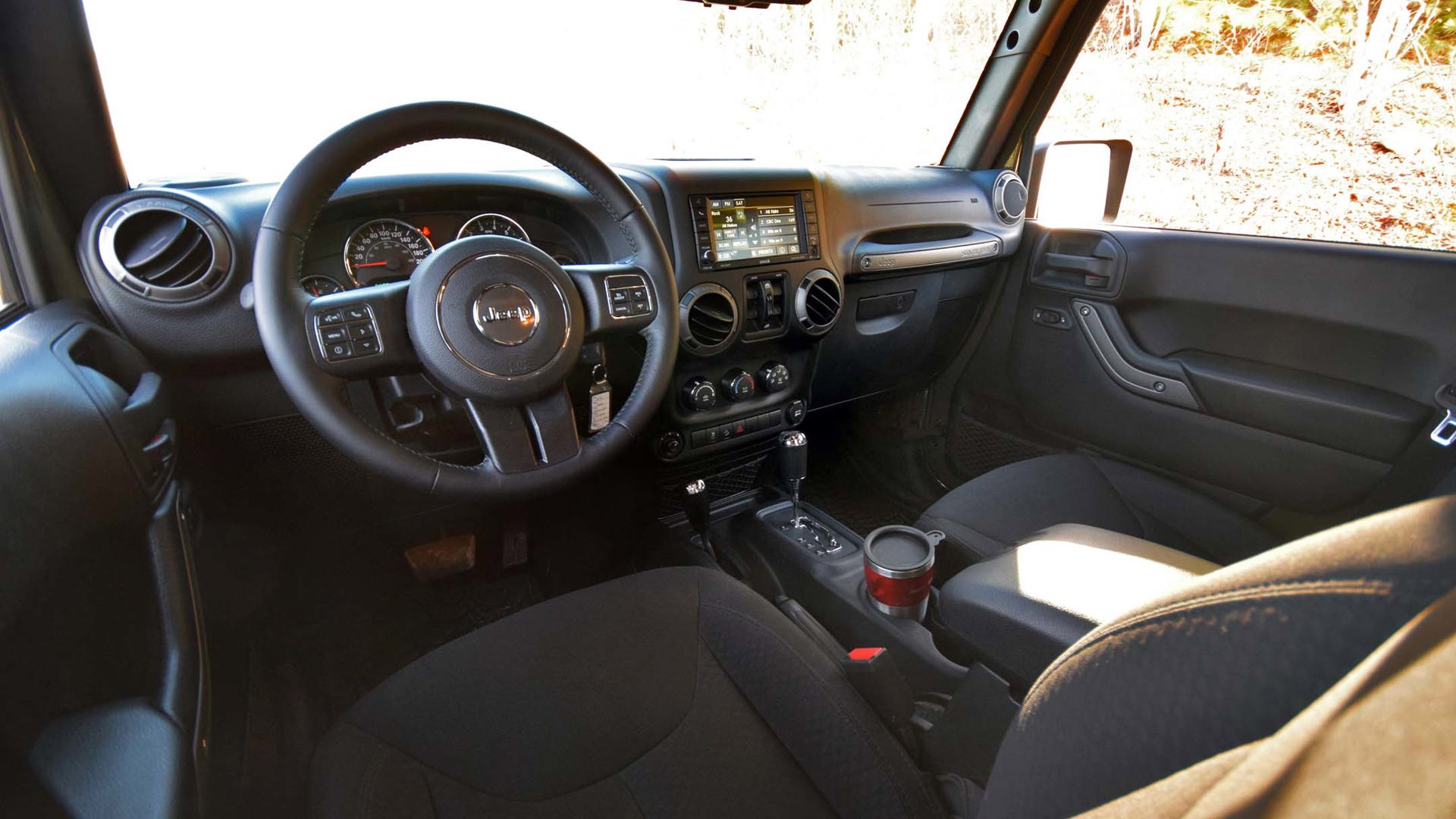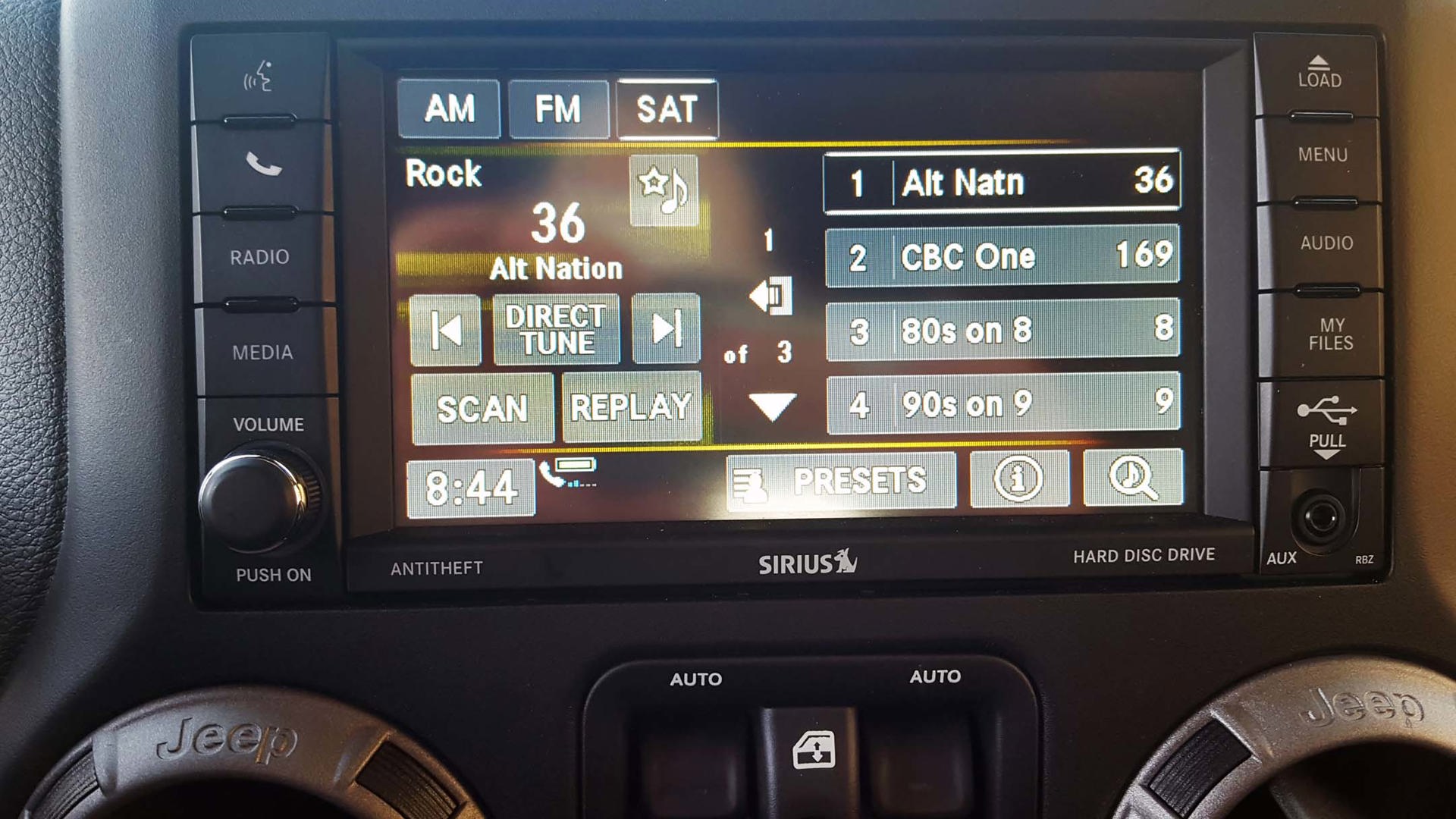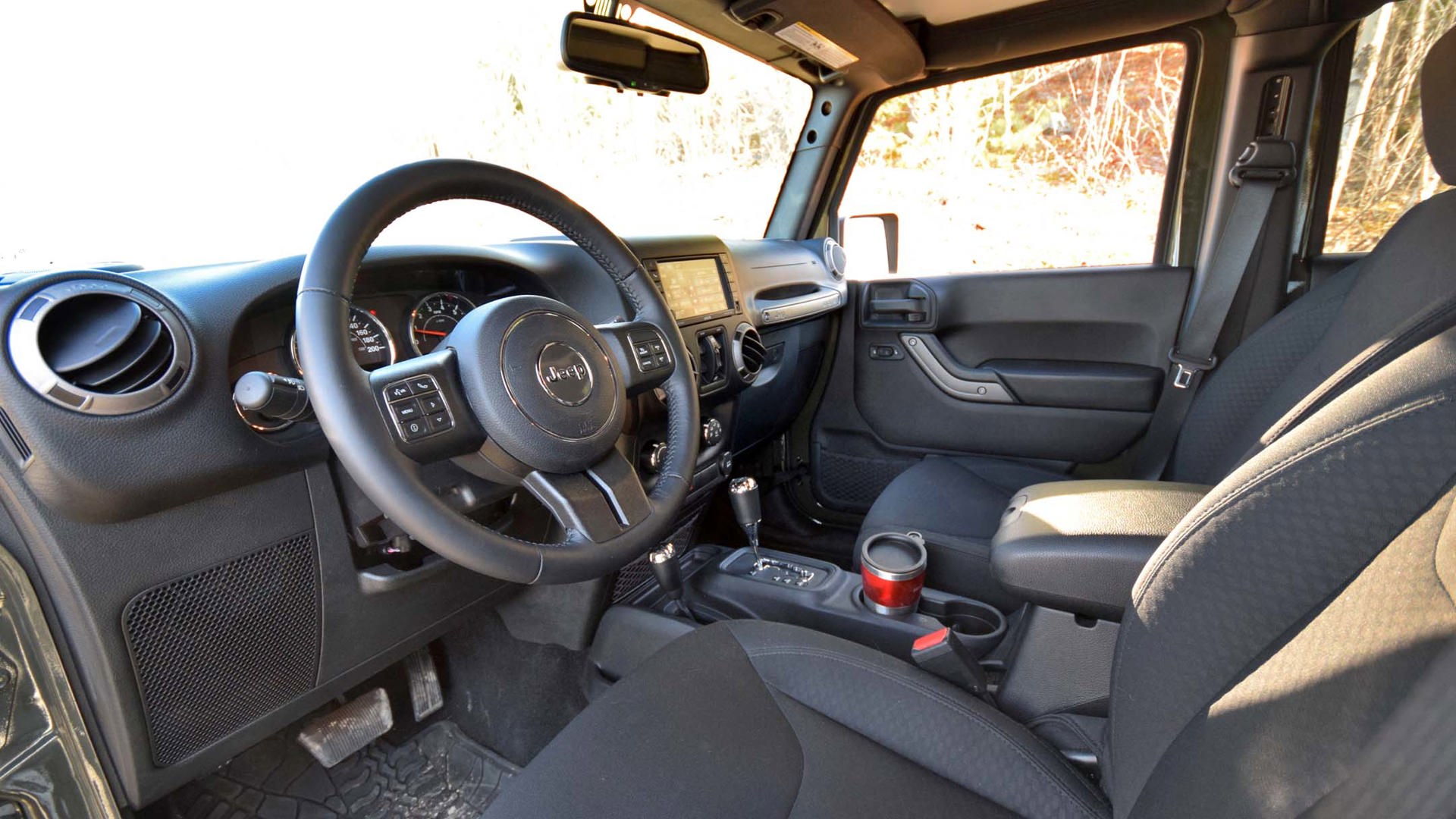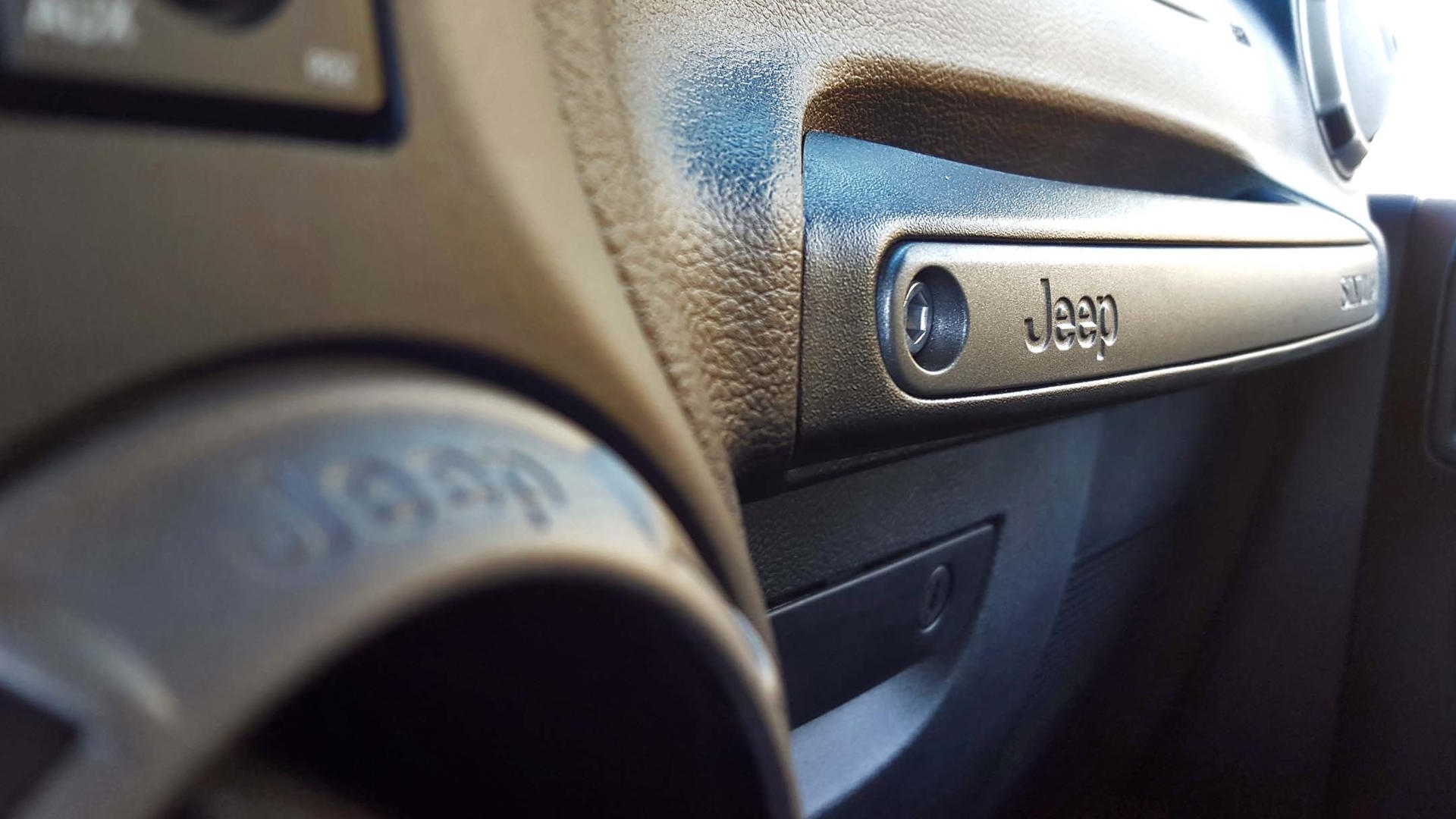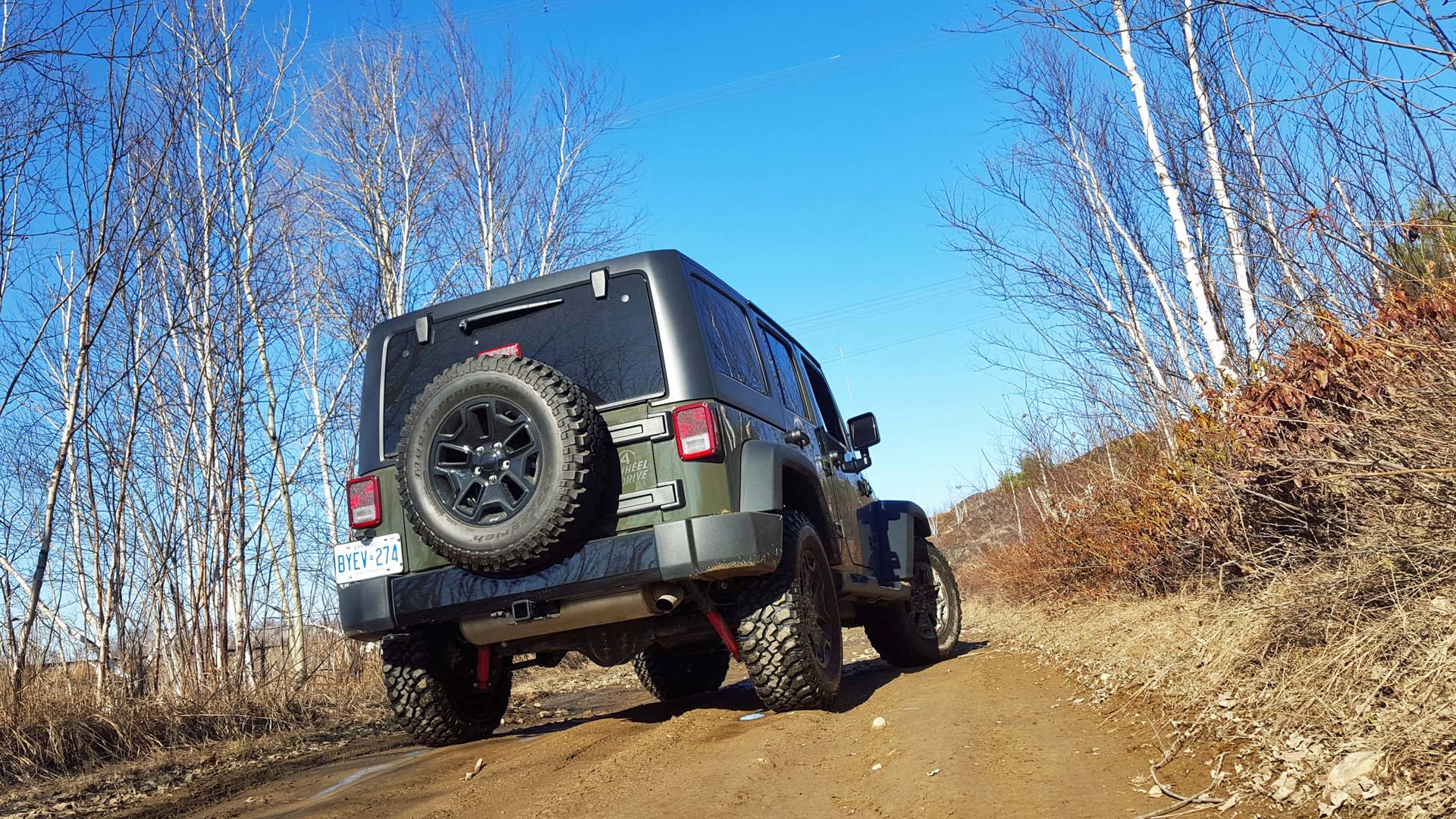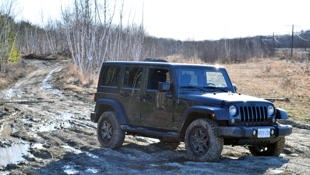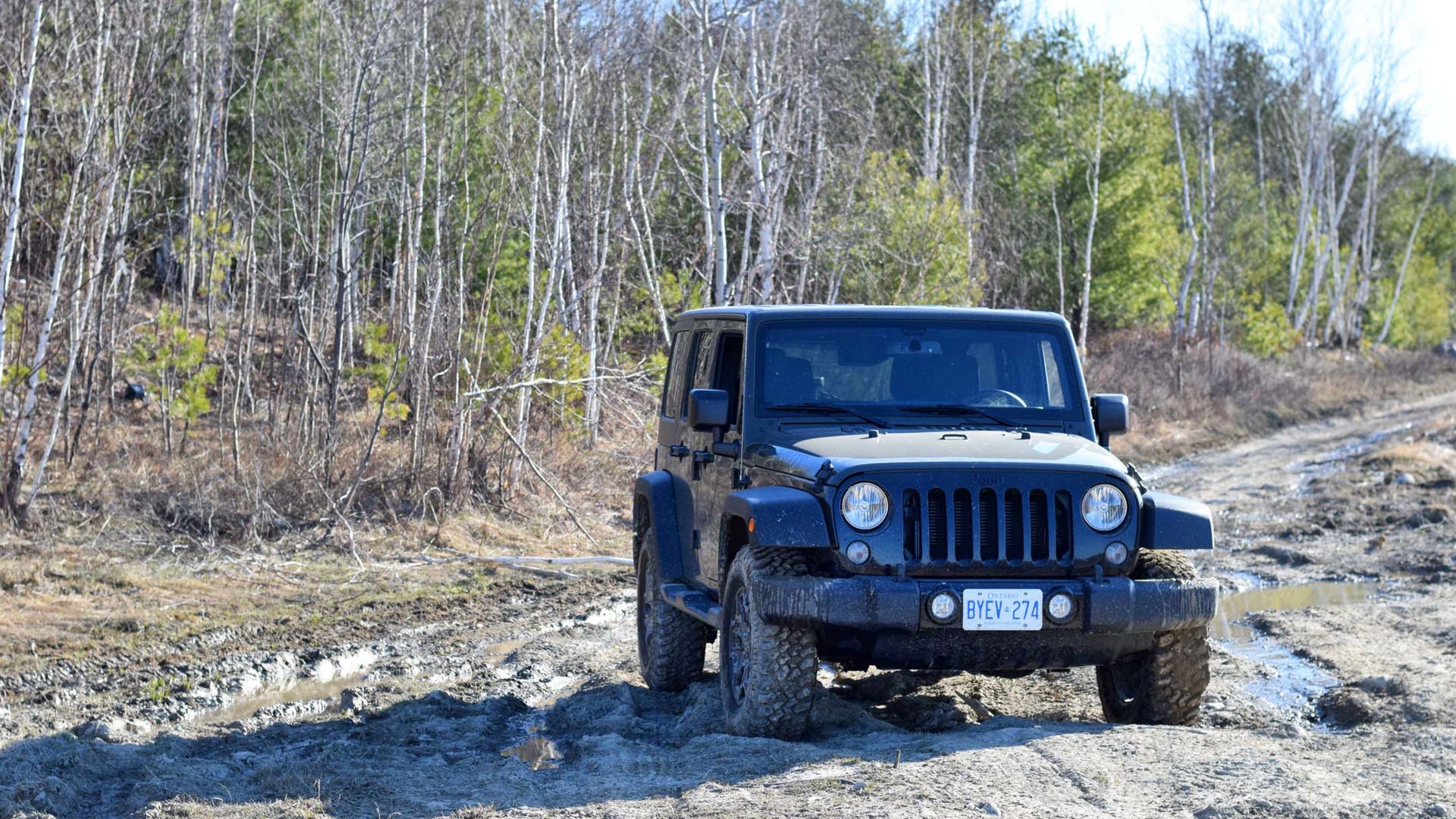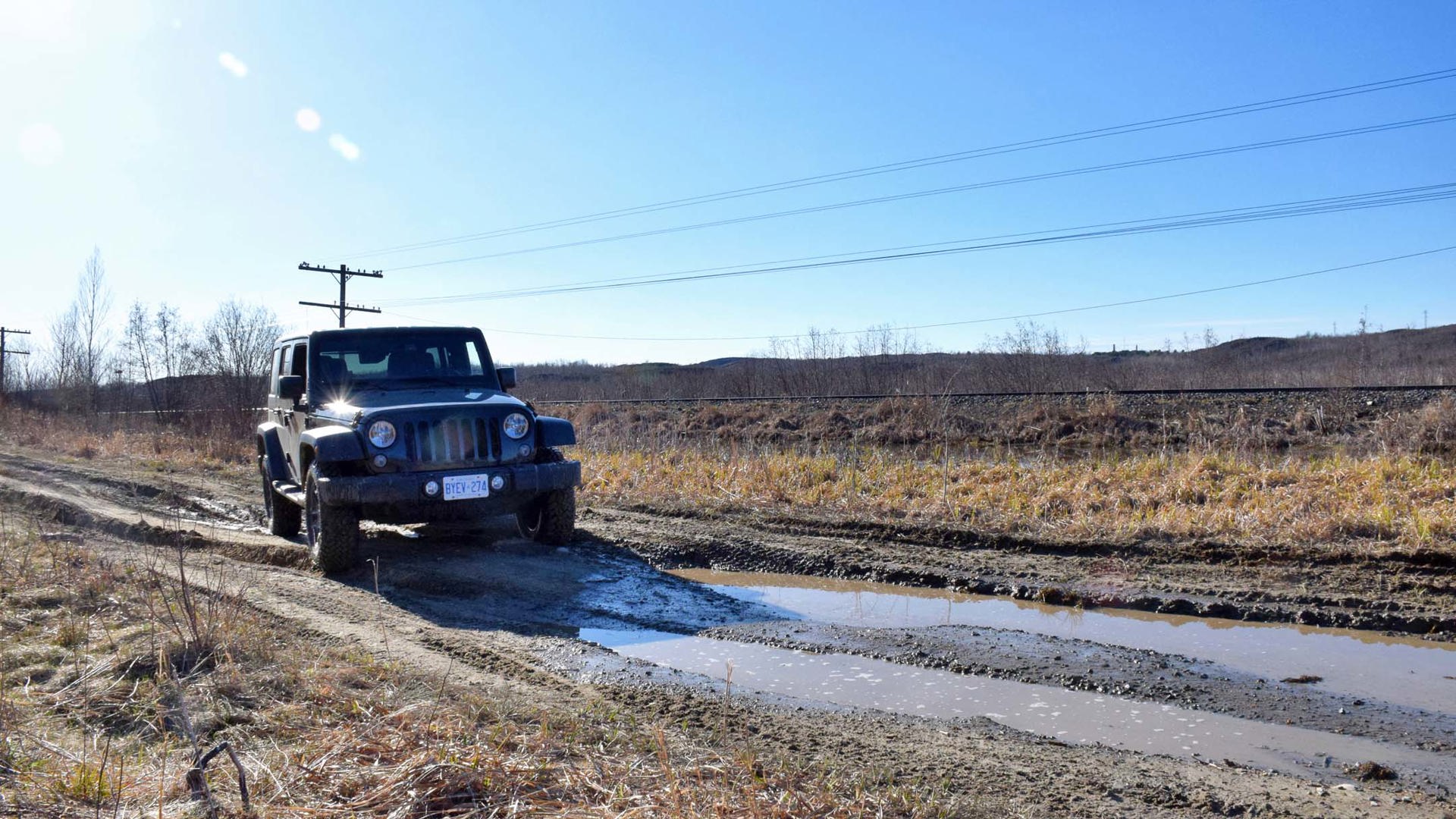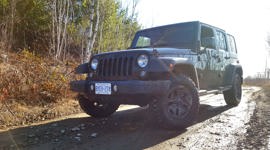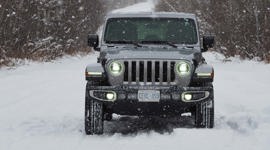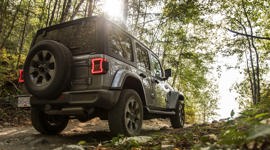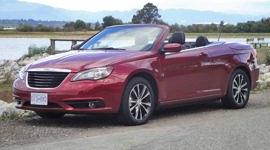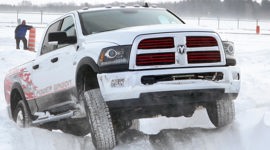 AutoTrader SCORE
AutoTrader SCORE
-
STYLING8/10
-
Safety7/10
-
PRACTICALITY7/10
-
USER-FRIENDLINESS8/10
-
FEATURES7/10
-
POWER8/10
-
COMFORT7/10
-
DRIVING FEEL7/10
-
FUEL ECONOMY6/10
-
VALUE8/10
The 2017 Jeep Wrangler is a big deal. With its proficiency at tackling snow, trails, and rough, real-world roads with confidence and durability, and with standard-equipment removable roof implements to take in the scenery, it might be the ultimate Canadian adventure vehicle. It’s also Canada’s least-expensive convertible, and one of the least-expensive ways to access a six-speed manual, 285 hp, four-wheel drive motoring icon.
Part of a perpetual line of special Wranglers sold on exclusivity and uniqueness
Today, units are being plucked rapidly from dealer lots, and resale values are strong. Updates in recent years, including added power output, improved mileage, and a modernized cabin, are partly to thank for the Wrangler’s popularity.
Ditto special-edition models, including the compelling new Willys Wheeler edition that comes as part of a perpetual line of special Wranglers sold on exclusivity and uniqueness. Willys Wheeler is a low-calorie Rubicon at heart: a satisfying option complete with unique cosmetics, graphics and hardware upgrades, value-bundled. Opt for a Wrangler Unlimited Sport and add the Willys Wheeler Package, and you’re kitted up for high capability, without going full-Rubicon where pricing and content is concerned. For many a shopper, pocketing the $5,000-plus price difference between Willy and Rubi, or using it for a nice trip to the Mopar accessory catalog, will be a dilly of a pickle.
Willys Wheeler adds Rubicon-spec shocks, a Dana 44 axle with Trac-Lok limited-slip 3.73 rear end, Mud Terrain tires, rock rails, skid-plating, and more. That’s a compelling proposition in a higher-capability, lower-cost Wrangler option, and the 285 standard horsepower, available six-speed stick, four usable seats, and numerous removable roof options help it stand on its own as a sporty, family-ready convertible, too. I have friends actively cross-shopping a Wrangler Unlimited against a Ford Mustang Convertible for this purpose. Wrangler is many things to many people.
And shoppers flock to the Wrangler, despite its compromises. Doors aren’t step-hinged, and often require two attempts to close. Flexibility and on-board space fall short of some crossover models built on more space-optimal unibody structures. Highway handling is on the vague side compared to something riding a car-based platform with on-road tires.
Wind noise levels are enormous too: with the plastic-panel roof, the Willys sounds like you’re inside of a giant camping cooler at 100 km/h. The tester’s optionally fitted Alpine stereo drowns the wind noise with ease, but try and make a voice-activated phone call at speed, and the microphone (mounted near the windshield, from which most noise seeps in) is charmingly useless.
“Call Brad.”
“SIX. SIX. EIGHT. FOUR. IS THIS CORRECT?”
“No!”
“DIALING.”
“Oh for the love of….”
But the highway handling isn’t horrible. Jiggly? Rigid? Sometimes stiffer than a gluten-free pancake? Sure. But, thanks in part to recent revisions to suspension and steering, and despite the tall height and knobby tires, the Willys Wheeler stays straight in its lane with minimal fuss, responds with relative precision to steering inputs, and feels largely unbothered by steering, even at speed, provided drivers are gentle at the controls and respect the underlying design of the vehicle.
Though the equipped Mud Terrain tires wouldn’t look out of place on a piece of agricultural equipment, road noise levels are surprisingly low, with minimal difference compared to a less-aggressive tire. These chunky, mud-ready tires are quieter than they look.
On board, Wrangler’s cabin, which was updated a few years back, features higher-quality parts and trim, no shortage of graphics, and a simple, functional layout with adequate at-hand storage. A commanding driving position, and relatively good outward visibility round out the package. Drivers sit up high behind a thin dash, and though rear seating sees the foreheads of taller passengers inches from the overhead roll-bar, rear accommodations are adequate or better for child seats, children, or smaller occupants.
The cargo hold is partially occupied by roof storage facilities, though it’s tall in height, square in shape, and easily stacked full of gear in boxes and bins for space optimization. If you’re adventuring solo, or with the significant other and your canine, the fold-flat rear seats enable plenty more usable room. Expect adequate space enough for a day trip to the beach with the family, or a Saturday afternoon off-road jaunt, complete with picnic cooler, chairs and other gear.
Wrangler’s new 3.6L V6 musters 285 hp, most of which remain idle without a good throttle smash, as the transmission is programmed to keep revs low, using the low-end torque to get things moving along at a leisurely pace. At times, Wrangler can feel slow, stodgy and almost like it’s got a hangover – though it boots along with an athletic punch when the throttle is planted hard.
But it’s in an off-road setting where Jeep, and in particular, this Willys Wheeler, shine brightest. In challenging conditions, and especially with the upgraded equipment in the Willys-grade tester, confidence was the stand-out attribute when exploring new terrain.
The tires have a tremendous bite, and can escape mud-ruts with relative ease if sucked in, thanks to jagged treads which extend onto the sidewalls. These tires extract a surprising level of grip from even the sort of greasy, peanut-buttery muck that tries to steal your boots if you’re walking through it.
When that grip starts running low, the anti-spin rear differential kicks in with no driver action required, binding the rear wheels together and maintaining the ability to fling and dig free of slop. Even without a full locking differential, Willys will likely to get into more places than any number of soft-roader AWD cute utes - and that’s without even engaging four-wheel drive. Helping in that quest is the Mud Terrain tires.
Need more traction? Give the console-mounted lever a man-yank to get all four wheels powered, and with no waiting for blinking lights or sissy-beepers. Now, your traction is doubled, and low-range is just another lever tug away. When climbing something steep and craggy and nasty, that low-range gearing, which amplifies the engine’s big low-end grunt, makes even dizzying inclines feel like a piece of cake, while drivers sit back and let the machine do the work.
Add in the generous ground clearance, rock rails and skid-plates for when that runs out, and the beefy ladder frame structure to which it’s all bolted, and there’s massive peace of mind over the sort of terrain that’d see a CR-V or Escape on a speed-date with a bashed-in oil-pan.
Or, in your writer’s case, peace of mind when faced with a lengthy trip down a hill so steep you couldn’t even walk it. Just a click activates Hill Descent Control. Then, you release the pedals, and focus on the steering. The electronics work to inch Wrangler downwards, maintaining a mere crawl, working on a rock-by-rock basis if needed, and maintaining about 3 km/h while staying straight and true, all the while, and almost no matter what. Hill Descent Control sees the Wrangler Willys adhere to greasy grades like cellophane to Aunt Marlene’s meatloaf. As someone afraid of heights, this feature proved to be a godsend.
A final note: as Wrangler is built on a truck-like ladder frame structure with a relatively simple and low-tech suspension setup, the feeling of durability is massive. Though ride quality can fall short on rough in-town roads, the Wrangler is almost completely free of harsh noises or sensations from the suspension, as rough stuff passes beneath. Even on exceptionally nasty roads or trails, it feels solid and durable, and never sounds or feels like the suspension is getting knocked around beneath you. Even the very best crossover sport ute models driven on similar terrain fail to pull off this feel of absolute toughness. It never feels or sounds like you’re causing any harm to the Wrangler’s underneath-y bits, and that’s a big-time confidence booster.
End of the day, Wrangler Willys backs drivers up with a toolkit full of off-road hardware at a compelling price, and virtually without further compromise to the Wrangler driving experience on the road more travelled. For those prioritizing toughness, capability and open-topped family-fun over exceptional fuel efficiency and a quiet ride, Wrangler Willys can be considered a top test drive candidate. Pricing starts from around $39,000 for a four-door Unlimited model.
| Engine Displacement | 3.6L |
|---|---|
| Engine Cylinders | V6 |
| Peak Horsepower | 285 hp @ 6,400 rpm |
| Peak Torque | 260 lb-ft @ 4,800 rpm |
| Fuel Economy | 14.7/11.7/13.4 L/100km cty/hwy/cmb |
| Cargo Space | 892/1,999 L rear seats folded |
| Model Tested | 2017 Jeep Wrangler Willys Wheeler |
| Base Price | $39,145 |
| A/C Tax | $100 |
| Destination Fee | $1,795 |
| Price as Tested | $44,430 |
|
Optional Equipment
$3,390 – 5-speed automatic $1,495; Air Conditioning $1,200; Premium Stereo $695
|
|
